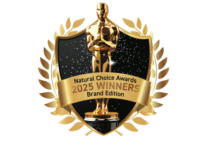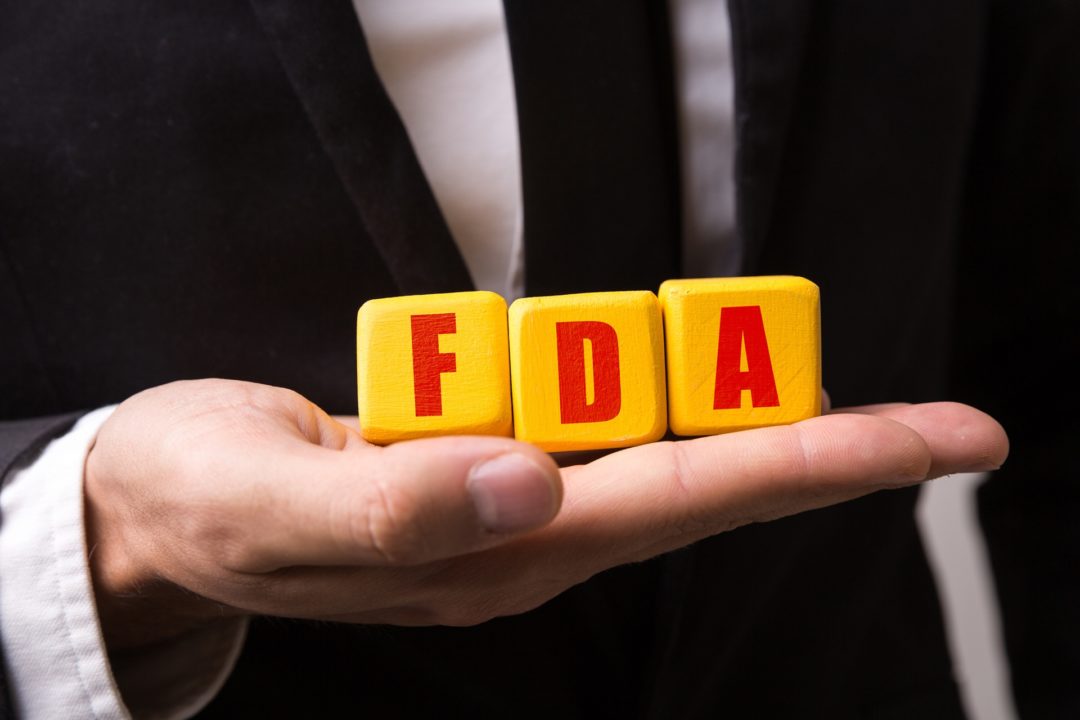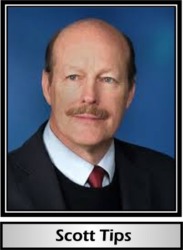Editor’s Note: This article is intended for information purposes only. Because state and municipal laws vary greatly, as do the circumstances of individual cases, readers are advised to contact an attorney for specific legal advice. © Scott C. Tips 2018
In 1938, Congress enacted the Food, Drug, and Cosmetic Act to ensure safer foods, drugs and cosmetics. The father of this Act, in large part, was homeopathic physician and Senator Royal Copeland, M.D., who made sure to write into the legislation a legal equivalency between allopathic and homeopathic medicine. He almost certainly never dreamed that his creation would one day turn upon and devour homeopathy. Yet, that is exactly what the Food and Drug Administration (FDA) is attempting to do with its latest regulatory move against homeopathy.
Don’t You Dare Be Successful!Back in the late 1980s, I worked in-house for a time as legal counsel for Wakunaga of America, Ltd. and Lake Pharmaceuticals, which had launched a very successful over-the-counter, anti-yeast-infection, homeopathic suppository for women that competed very favorably with the prescription allopathic products then on the market. It didn’t take long, though, before the FDA came knocking on the door, demanding that the product be removed from the market. All of the typical charges were hurled against this product that had harmed no one and benefited many: “It’s dangerous,” “It’s unapproved,” and “You cannot do this.” But what it all really came down to was what was quietly stated to me by one FDA agent when he admitted, “If your client’s product had never been successful, then we never would have come after you.”
That was the reality then just as it is now. Homeopathy is increasingly successful. The FDA can read the market numbers just as easily as any of the rest of us and those numbers are impressive. From respectable sales of $3 billion in 2007 in North America, to a predicted $17.486 billion in annual sales by the year 2024, we are looking at a compound annual global growth rate from 2016 to 2024 of over 18%, according to Transparency Market Research (1). While these numbers pale in comparison to the $450 billion in allopathic-drug sales in 2016, the drug industry is nothing if not excellent tea-leaf readers and prognosticators. With Pharmaceutical Commerce reporting a mere 5.8% growth in allopathic drug sales in 2016, it doesn’t take a rocket scientist to see which way the wind is blowing (2).
So, in the time-honored American tradition of “if you can’t beat them in the marketplace, then call in the Sheriff,” the pharmaceutical industry has evidently put out a call to the regulatory hitmen who are at that industry’s beck and call. Just as Wakunaga and Lake received a knock on the door from the FDA when its successful product threatened the competition, homeopathy is now receiving its door-knock by the FDA because of homeopathy’s upward sales trend and surging popularity.
Staged From Day OneWhen you have been at this game as long as the FDA has, you know exactly how to set the stage for any regulatory action. You don’t just kick down doors and start busting heads. No, that is soooo old school. These days, once you receive your marching orders, you plan everything out. You take first steps. In this case, you start by holding a public hearing. The FDA did this in April 2015, when it pretended to listen to homeopathic practitioners, consumers, patients, and manufacturers who attested to the benefits and efficacy of homeopathy as well as their support for the current regulatory regime under FDA Compliance Policy Guide 400.400 (3). In fact, over 9,000 positive comments about homeopathy were submitted to the FDA, which promptly disregarded them as if they had never been made at all.
The next step here was to find a “problem” that could be used as a PR example. The “problem” then gets publicized far and wide with the FDA’s mainstream-media cohorts singing the same song so that enough of the population and politicians will believe that there actually is a problem. The “problem” becomes a problem because we have all been told enough times that it is a problem. Repetition can work wonders, especially with populations having the attention span of a goldfish.
However, the dunderheads at the FDA decided to pounce on Hyland’s teething tablets, which have been safely sold for 85 years. I have known Hyland’s since the mid-1980s and it would be very hard to find a more reputable company than that. They would sooner shut down their business than ever harm any baby; and in fact none were harmed by their teething product. Even Health Canada stated that it saw no problem with these products in Canada (4).
Perhaps Dana Ullman, a well-regarded authority on homeopathy, explained it best when he wrote, “Some media reported that there were 10 deaths associated with this homeopathic medicine, but this assertion has been proven to be false. The FDA’s website noted nanodose levels of a belladonna chemical called scopolamine, and yet, the U.S. government’s own database for toxic substances reports that ‘there are no reported fatal doses for scopolamine.’”
It was all a smash-and-run hit job by the FDA, which in September 2016 suddenly issued a warning to the public about Hyland’s teething tablets, claiming they had “hundreds of problems”(5). But again, as Dana Ullman has pointed out, “according to the FDA, one bottle of Hyland’s Teething Tablets that was found to have the highest amount of scopolamine (an alkaloid in belladonna) had approximately 299 nanograms of it...or .00029 milligrams (6). No other bottle was found to have this amount of this chemical, but even this dose is well within safe doses. Today, a commonly prescribed drug for motion sickness includes .075 mg of scopolamine for infants of 3 years of age (7) ... or the equivalent of over 250 bottles of this same Hyland’s Teething Tablets bottle!” Still, since when did the facts or a moral nicety ever prevent a government from launching an investigation, a raid, or even a war?
In this case, just as when the Johnson Administration falsely claimed in 1964 that U.S. warships had been attacked by the North Vietnamese in the Gulf of Tonkin to justify a great expansion of American intervention in Vietnam, the FDA used the Hyland’s teething-tablet incident as its justification for a total review of its regulation of the homeopathic industry.
The Proposed CPGThe FDA has never tried to comprehend homeopathy. With its two-dimensional view of health and medicine, the FDA is simply incapable of understanding that we are all energetic beings, that we are affected by energy as much as if not more than biochemistry (8). Trying to explain homeopathy and energy medicine to FDA regulators is like trying to explain a light bulb to a Third-Century peasant. The peasant will think you are crazy no matter how patiently you try to bridge the gap with explanations.
With this primitive mindset, then, the FDA has trotted out its proposed replacement for a Compliance Policy Guide (CPG) that has worked admirably for some 30 years (9). Basically, the FDA wants to stuff the square peg of homeopathy into the round hole of allopathic medicine. Or, as the old saying goes, the FDA has a hammer so everything looks like a nail. And homeopathy is about to get pounded.
The proposed CPG intends to replace its past system (which has worked well for decades) with another regulatory regime based upon the same “risk-based” enforcement approach that has brought consumers such disasters as Vioxx (60,000-500,000 deaths), Avandia (83,000+ deaths), Ibuprofen (17,000 deaths/year), and chemotherapy (9 million since 2000) (10, 11). That’s right, we haven’t had any deaths from homeopathic products in 30 years, so we really need to make sure it catches up with modern science and its hundred-thousand-deaths-per-year sterling record under FDA’s watchful regulatory eye (12).
In applying its highly touted but quite unsuccessful “risk-based” approach to homeopathy, the FDA, through its proposed CPG, would prioritize “enforcement and regulatory actions involving unapproved drug products labeled as homeopathic that have the greatest potential to cause risk to patients. Under this approach, many homeopathic products will likely fall outside the risk-based categories described in the new draft guidance and will remain available to consumers. The FDA intends to focus its enforcement authorities on the following kinds of products:
• products with reported safety concerns;
• products that contain or claim to contain ingredients associated with potentially significant safety concerns;
• products for routes of administration other than oral and topical;
• products intended to be used for the prevention or treatment of serious and/or life-threatening diseases and conditions;
• products for vulnerable populations; and products that do not meet standards of quality, strength or purity as required under the law”(13).
Part of the problem confronting the FDA is that so much of the science that it will rely upon to prioritize and then enforce its CPG against homeopathic (and other) products is simply false (14). The science is just not there to support the government’s contentions. Rather, the FDA relies upon comic-book science that depends for its validity upon others fearing to challenge that “science.”
Are All Homeopathic Drugs Illegal?The quick and ready answer is “No.” While it is true, as cried out by some, that the FDA’s draft Guidance Document states that, “[a] new drug cannot be marketed unless it goes through the FDA’s approval process. No homeopathic drugs have gone through FDA approval nor can any producer afford to take them through the approval process”; that FDA statement misstates the facts concerning homeopathic drugs. If it were a true statement and all drugs had to go through an approval process before they could be marketed, then aspirin would be illegal to sell because aspirin has never gone through an FDA-approval process.
In its CPG Section 440.100, the FDA itself has agreed that “Under the 1938 grandfather clause (see 21 U.S.C. 321(p)(1)), a drug product that was on the market prior to passage of the 1938 Act and which contained in its labeling the same representations concerning the conditions of use as it did prior to passage of that act was not considered a new drug and therefore was exempt from the requirement of having an approved new drug application.
Further, “[u]nder the 1962 grandfather clause, the FD&C Act exempts a drug from the effectiveness requirements if its composition and labeling has not changed since 1962 and if, on the day before the 1962 Amendments became effective, it was (a) used or sold commercially in the United States, (b) not a new drug as defined by the FD&C Act at that time, and (c) not covered by an effective application. See Public Law 87-781, section 107 (reprinted following 21 U.S.C.A. 321); see also USV Pharmaceutical Corp. v. Weinberger, 412 U.S. 655, 662-66 (1973).”
The two grandfather clauses in the FD&C Act have been construed very narrowly by the courts and the FDA’s position is that very few drugs on the market are entitled to grandfather status because the drugs currently on the market most likely differ from the previous versions in some respect (such as formulation, dosage or strength, dosage form, route of administration, indications, or intended patient population). If a company claims that its product is grandfathered, then the company has the burden to prove that claim. See 21 CFR 314.200(e)(5); see also United States v. An Article of Drug (Bentex Ulcerine), 469 F.2d 875, 878 (5th Cir. 1972); United States v. Articles of Drug Consisting of the Following: 5,906 Boxes, 745 F.2d 105, 113 (1st Cir 1984).
So, the FDA’s proposed innovation-killing and anti-health CPG on homeopathic drug products does not “outlaw” homeopathy since many of the products are timeless; but the proposed CPG will put a chokehold on this successful and growing market niche, once again thwarting consumer preference and better health. And all for absolutely no legitimate reason.
Take Action NowWakunaga and Lake won their hard-fought battle against the FDA and, to my knowledge, Lake’s product is still on the market even today. The two companies are an inspiration and show us that just because the FDA takes action on an issue, it does not mean the FDA will automatically win. We can keep this proposed CPG from taking effect if we are all persistently vocal enough to bring the roof down on the FDA over this issue. Among other things, consider taking action against this CPG athttps://www.thenhf.com/campaigns.
Remember, after the First World War there was a pandemic of the Spanish influenza that killed some 20-40 million people — more than were even killed during the war. Interestingly enough, the death rate of Spanish-flu patients treated with allopathic medicine was almost 30%, while the death rate for those treated homeopathically was 1.05% (15). Gelsemium was the remedy most commonly used; and yet the FDA, if it had its way, would remove this remedy without any hesitation or remorse whatsoever. The Agency would also remove those other remedies that could help the vaccine-injured. So, when you hear the FDA spout its usual nonsense about wanting to protect the public, realize that the FDA is really just protecting its allopathic-drug-industry masters. WF
References
1. Transparency Market Research, “Homeopathy Product Market is Expected to Reach US$17,486.2 Million by 2024” etc.,Cision, Nov 24, 2016, athttps://www.prnewswire.com/news-releases/homeopathy-product-market-is-expected-to-reach-us174862-million-by-2024-exhibiting-a-cagr-of-182-over-the-period-between-2016-and-2024-600000861.html.
2. “US drug 2016 sales, at $450 billion, moderate to single-digit growth,”Pharmaceutical Commerce, May 4, 2017, athttp://pharmaceuticalcommerce.com/latest-news/us-drug-2016-sales-450-billion-moderate-single-digit-growth/.
3. Compliance Policy Guide Section 400.400 “Conditions Under Which Homeopathic Drugs May Be Marketed,” FDA, Issued May 31, 1988, revised March 1995, athttps://www.fda.gov/ICECI/ComplianceManuals/CompliancePolicyGuidanceManual/ucm074360.htm. This CPG was formerly designated CPG 7132.15, the designation I first knew it as.
4. “Health Canada updates Canadians on homeopathic teething products,”Health Canada, Oct 20, 2016, athttp://healthycanadians.gc.ca/recall-alert-rappel-avis/hc-sc/2016/60634a-eng.php.
5. “FDA warns against the use of homeopathic teething tablets and gels,”FDA News Release, Sept 30, 2016, athttps://www.fda.gov/NewsEvents/Newsroom/PressAnnouncements/ucm523468.htm.See alsoSheila Kaplan, “Homeopathic remedies harmed hundreds of babies, families say, Homeopathic remedies harmed hundreds of babies, families say, as FDA investigated for years,”Stat News, Feb 21, 2017, athttps://www.statnews.com/2017/02/21/hylands-homeopathic-teething-fda/
6.https://www.fda.gov/drugs/drugsafety/informationbydrugclass/ucm538669.htm
7.https://www.chemistanddruggist.co.uk/content/update-plus-free-trial-managing-motion-sickness
8. Indeed, one explanation of biochemistry is that it is nothing but energy expressed in a material form. pH values, for example, are simply a biochemical way of describing energy values (thepowerof hydrogen).
9. “FDA proposes new, risk-based enforcement priorities to protect consumers from potentially harmful, unproven homeopathic drugs,”FDA News Release, Dec 18, 2017, athttps://www.fda.gov/NewsEvents/Newsroom/PressAnnouncements/ucm589243.htm.
10. Alexander Cockburn, “When Half a Million Americans Died and No One Noticed,”The Week, April 27, 2012, athttp://www.theweek.co.uk/us/46535/when-half-million-americans-died-and-nobody-noticed.
11. Scott Tips, “Restore Integrity to the FDA, Remove the Pharmaceutical-Industry Infiltrators,” WholeFoods Magazine, March 2017, athttps://wholefoodsmagazine.com/columns/legal-tips/restore-integrity-fda-remove-pharmaceutical-industry-infiltrators/.
12. According to one source, 290 Americans are killed by prescription drugs each and every day.SeeStarfield B,the Journal of the American Medical Association, Vol. 284, No. 4, Johns Hopkins School of Hygiene and Public Health (2000). Yet another says 2,460 Americans die per week from prescription drugs.SeeMichael Schroeder, “Death By Prescription,”U.S. News, Sept 27, 2016, athttps://health.usnews.com/health-news/patient-advice/articles/2016-09-27/the-danger-in-taking-prescribed-medications. Others, still, have pegged the death count at almost ten times the first number.
13.FDA News Release, Dec 18, 2017,supra.
14. John P.A. Ioannidis, “Why Most Published Research Findings Are False,”PLoS Med, 2005 Aug; 2(8): e124; pub online 2005 Aug 30, doi: 10.1371/journal.pmed.0020124, athttps://www.ncbi.nlm.nih.gov/pmc/articles/PMC1182327/.
15. Kate Birch, “Vaccine Free: Homeopathic Education for the Immune System,”Vaccine Free, undated, athttps://vaccinefree.wordpress.com/vaccine-injury-homeopathic-detox-mn-cease/.
Published in WholeFoods Magazine April 2018

2025 Natural Choice Awards
March 31, 2025









